The humanized platelet glycoprotein VI Fab inhibitor EMA601 protects from arterial thrombosis and ischaemic stroke in mice
- PMID: 39150906
- PMCID: PMC11560278
- DOI: 10.1093/eurheartj/ehae482
The humanized platelet glycoprotein VI Fab inhibitor EMA601 protects from arterial thrombosis and ischaemic stroke in mice
Abstract
Background and aims: Glycoprotein VI (GPVI) is a platelet collagen/fibrin(ogen) receptor and an emerging pharmacological target for the treatment of thrombotic and thrombo-inflammatory diseases, notably ischaemic stroke. A first anti-human GPVI (hGPVI) antibody Fab-fragment (ACT017/glenzocimab, KD: 4.1 nM) recently passed a clinical phase 1b/2a study in patients with acute ischaemic stroke and was found to be well tolerated, safe, and potentially beneficial. In this study, a novel humanized anti-GPVI antibody Fab-fragment (EMA601; KD: 0.195 nM) was developed that inhibits hGPVI function with very high potency in vitro and in vivo.
Methods: Fab-fragments of the mouse anti-hGPVI IgG Emf6.1 were tested for functional GPVI inhibition in human platelets and in hGPVI expressing (hGP6tg/tg) mouse platelets. The in vivo effect of Emf6.1Fab was assessed in a tail bleeding assay, an arterial thrombosis model and the transient middle cerebral artery occlusion (tMCAO) model of ischaemic stroke. Using complementary-determining region grafting, a humanized version of Emf6.1Fab (EMA601) was generated. Emf6.1Fab/EMA601 interaction with hGPVI was mapped in array format and kinetics and quantified by bio-layer interferometry.
Results: Emf6.1Fab (KD: 0.427 nM) blocked GPVI function in human and hGP6tg/tg mouse platelets in multiple assays in vitro at concentrations ≥5 µg/mL. Emf6.1Fab (4 mg/kg)-treated hGP6tg/tg mice showed potent hGPVI inhibition ex vivo and were profoundly protected from arterial thrombosis as well as from cerebral infarct growth after tMCAO, whereas tail-bleeding times remained unaffected. Emf6.1Fab binds to a so far undescribed membrane proximal epitope in GPVI. The humanized variant EMA601 displayed further increased affinity for hGPVI (KD: 0.195 nM) and fully inhibited the receptor at 0.5 µg/mL, corresponding to a >50-fold potency compared with ACT017.
Conclusions: EMA601 is a conceptually novel and promising anti-platelet agent to efficiently prevent or treat arterial thrombosis and thrombo-inflammatory pathologies in humans at risk.
Keywords: Anti-platelet therapy; GPVI; Platelet; Stroke; Thrombosis.
© The Author(s) 2024. Published by Oxford University Press on behalf of the European Society of Cardiology.
Figures

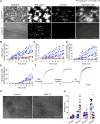
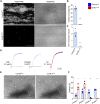
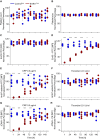
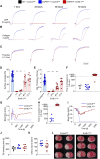


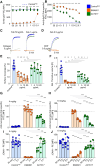
Similar articles
-
Glenzocimab: A GPVI (Glycoprotein VI)-Targeted Potential Antiplatelet Agent for the Treatment of Acute Ischemic Stroke.Stroke. 2022 Nov;53(11):3506-3513. doi: 10.1161/STROKEAHA.122.039790. Epub 2022 Sep 21. Stroke. 2022. PMID: 36128904 Review.
-
A humanized glycoprotein VI (GPVI) mouse model to assess the antithrombotic efficacies of anti-GPVI agents.J Pharmacol Exp Ther. 2012 Apr;341(1):156-63. doi: 10.1124/jpet.111.189050. Epub 2012 Jan 11. J Pharmacol Exp Ther. 2012. PMID: 22238212
-
Pharmacological Blockade of Glycoprotein VI Promotes Thrombus Disaggregation in the Absence of Thrombin.Arterioscler Thromb Vasc Biol. 2020 Sep;40(9):2127-2142. doi: 10.1161/ATVBAHA.120.314301. Epub 2020 Jul 23. Arterioscler Thromb Vasc Biol. 2020. PMID: 32698684
-
Anti-GPVI Fab SAR264565 effectively blocks GPVI function in ex vivo human platelets under arterial shear in a perfusion chamber.Eur J Clin Pharmacol. 2017 Aug;73(8):949-956. doi: 10.1007/s00228-017-2264-9. Epub 2017 May 18. Eur J Clin Pharmacol. 2017. PMID: 28523478 Clinical Trial.
-
GPVI inhibition: Advancing antithrombotic therapy in cardiovascular disease.Eur Heart J Cardiovasc Pharmacother. 2024 Aug 14;10(5):465-473. doi: 10.1093/ehjcvp/pvae018. Eur Heart J Cardiovasc Pharmacother. 2024. PMID: 38453424 Free PMC article. Review.
Cited by
-
Ischemia/reperfusion injury in acute human and experimental stroke: focus on thrombo-inflammatory mechanisms and treatments.Neurol Res Pract. 2024 Nov 25;6(1):57. doi: 10.1186/s42466-024-00355-y. Neurol Res Pract. 2024. PMID: 39582054 Free PMC article. Review.
-
Glycoprotein VI inhibitors: glenzocimab and EMA601 two inhibitory Fabs.Eur Heart J. 2025 Jul 21;46(28):2825-2826. doi: 10.1093/eurheartj/ehaf160. Eur Heart J. 2025. PMID: 40171661 Free PMC article. No abstract available.
-
Thromboinflammation is associated with clinical outcome after ST-elevation myocardial infarction.Blood Adv. 2024 Nov 12;8(21):5581-5589. doi: 10.1182/bloodadvances.2024014273. Blood Adv. 2024. PMID: 39226457 Free PMC article.
-
One immune cell to bind them all: platelet contribution to neurodegenerative disease.Mol Neurodegener. 2024 Sep 27;19(1):65. doi: 10.1186/s13024-024-00754-4. Mol Neurodegener. 2024. PMID: 39334369 Free PMC article. Review.
-
A New Perspective on Mechanisms of Neurodegeneration in Experimental Autoimmune Encephalomyelitis and Multiple Sclerosis: the Early and Critical Role of Platelets in Neuro/Axonal Loss.J Neuroimmune Pharmacol. 2025 Feb 4;20(1):14. doi: 10.1007/s11481-025-10182-w. J Neuroimmune Pharmacol. 2025. PMID: 39904925 Free PMC article. Review.
References
-
- Michelson AD, Cattaneo M, Frelinger A, Newman P. Platelets. 4th edn. Amsterdam, The Netherlands: Elsevier; 2019.
-
- Stellos K, Bigalke B, Borst O, Pfaff F, Elskamp A, Sachsenmaier S, et al. . Circulating platelet-progenitor cell coaggregate formation is increased in patients with acute coronary syndromes and augments recruitment of CD34+ cells in the ischaemic microcirculation. Eur Heart J 2013;34:2548–56. 10.1093/eurheartj/eht131 - DOI - PubMed
MeSH terms
Substances
Grants and funding
LinkOut - more resources
Full Text Sources
Medical
Miscellaneous

